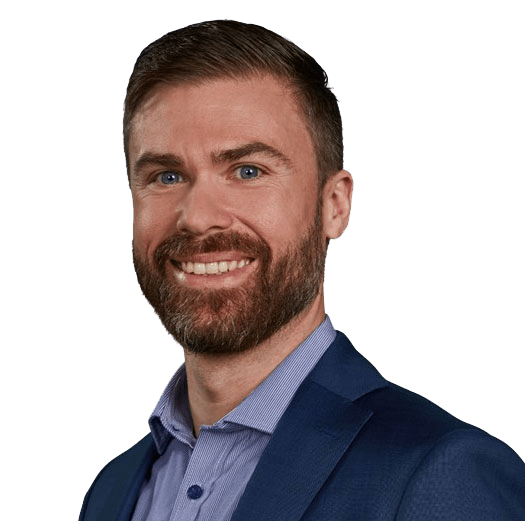The IoT is empowering industries across the globe, and the warehouse sector is no exception. Forklift telematics is just one example of how businesses are using connected devices and real-time data to optimize operations, enable new business models, reduce costs and improve driver safety.
But the possibilities extend far beyond forklift trucks. Discover how IoT is transforming various industries by exploring our collection of IoT use cases across transport & logistics, manufacturing, smart cities and utilities. See how businesses are utilizing connected technology to achieve real world results.
Forklift telematics systems enable forklift trucks to be monitored, tracked and managed to ensure safe operation, maximized utilization and optimized truck and battery life. Enabled by wireless connectivity, forklift fleet management enables the location, maintenance needs and usage of forklifts to continuously monitored, providing insights into truck usage and operator behavior.
Fewer than 1%
of all forklifts deployed are autonomous
>3million units
Installed base of material handling equipment with telematics systems in Europe and North America
An increasing share of material handling equipment such as forklifts are now equipped with telematics-enabled fleet management systems. Forklift fleet management is growing in importance as volumes increase and the increasing utilization of battery-powered forklifts places even greater reliance on accurate usage data to ensure trucks can operate with optimized charging. Lithium-Ion battery technology is being widely adopted with some markets seeing more than 25% of new, electric forklift trucks using the battery technology.
In busy warehouses and campuses such as ports, forklift truck fleets are used to load and unload cargo and pick and deliver stock. By knowing where forklifts are, systems can optimize how they are utilized ensuring efficient journeys. There are two resources today, the forklift trucks and the drivers, both of which are needed for warehouse performance requirements to be met.
The ability to generate real-time insights into wear and tear and operator and truck availability means warehouse managers can ensure minimized delays in stock picking, container unloading or stock movements. The capabilities of forklift monitoring systems allow the condition of the forklift truck to be assessed so predictive maintenance can take place, thereby optimizing downtime. In addition, operator behavior can be monitored to allow training and advice to be given to improve their usage of the forklift.
One additional parameter that could be added is the product warranty setup between the manufacturer and the user. Since the manufacturer can monitor how the product has been used they can secure only to support legitimate warranty errands.
A forklift tracking system needs to work effectively across large warehouses in which connectivity can be challenging. Forklifts operate in dynamic environments so continuous connectivity is required, which means forklift telematics systems can need to support different connectivity types such as cellular, Wi-Fi and others. As automated forklifts become more popular, the resilience and security of the network technologies utilized becomes even more important as driverless vehicles must interact with other users and forklifts driven by people.
Forklift trucks are expensive assets so forklift tracking is an important and valuable aspect to ensure trucks are not stolen, that they can be found easily if parked up and then used by another operator and so logistics systems can easily see what forklift resources are available in real-time.
Forklift monitoring systems allow real-time collection of information, allowing action to be taken that helps reduce safety risks and improve operational efficiency. Forklift telematics systems can deliver:
Forklift telematics depends on connectivity to communicate data and enable benefits to be realized. Typically, forklifts operate in confined campuses or warehouses but they are continuously mobile so they need a blend of GPS connectivity to track their locations at all times and communication technology to enable transmission of data. In warehouses and factories there is typically existing coverage that can be used but this may not be suitable for the needs of forklift fleets.
Standard Wi-Fi for example is sufficient for connecting static machines but it may not be suitable for the higher speed movements of multiple forklifts across a site. Instead, resilient, secure cellular technology such as 4G or 5G should be adopted. With 2G and 3G networks set to retire, there are a range of LTE variants to suit forklift deployments with near-ubiquitous coverage in developed markets. These offer a balance between cost and performance that meets the majority of forklift fleet management use cases today.
As automated forklifts continue to be adopted, greater attention is being given to 5G networks. These offer ultra-low latency, are highly robust and can allow high volumes of devices to connect to a single cell. Infrastructure is still being rolled out for public 5G networks, although campuses are deploying private 5G, which could also be used for forklift fleet monitoring.
Telenor offers a complete portfolio of Managed Connectivity Services. These encompass the highest speed LTE or 5G cellular networks and low power wide area (LPWA) networks that allow battery life to be maximised. Telenor IoT’s Connectivity Management Platform simplifies forklift fleet tracking deployments worldwide by providing an unmatched IoT Portal, enabling effortless implementation, management, and scalability from a single, unified platform.
You can explore more on the IoT Logistics case studies page, including customer cases with smart shipping containers, construction machinery, and connected logistics units for the global freight industry, or download Telenor´s Customer Cases booklet.
The forklift market is currently engaged in two transformations, the increasing adoption of battery power and the beginning of uptake of automated, driverless forklift trucks. These innovations make the capabilities of forklift telematics more important than ever before as fleet operators rely on the insights into usage to help optimize battery life and charging scheduling. For automated forklifts, the low latency, high speed of 5G will be critical for ensuring safe operations that are compliant and deliver on their efficiency promises.
Telenor IoT, with our connectivity solutions and IoT experience, is ready to share the load and help you realize the full potential of your forklift fleet.
Ready to simplify your IoT deployment? Talk to our connectivity experts!


